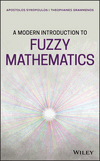Fuzzy Geometry
Summary
In the context of fuzzy mathematics, one follows a different route in geometry and its relation to reality. Indeed, when one studies or measures real objects, he/she soon realizes that the very process of measurement will often render expectations and theoretically exact predictions as improbable. In fact, fuzzy geometry has been studied from different perspectives. This chapter follows and reviews the fine line of thought initiated by J.J. Buckley and E. Eslami. They focused on the notion of membership and where all the standard basic geometric notions, such as lengths (heights, widths, diameters, etc.) and areas of fuzzy subsets, are fuzzy real numbers. The chapter discusses fuzzy points and fuzzy distance, fuzzy lines, fuzzy circles, and regular fuzzy polygons. It also presents an informative discussion on the applications of fuzzy geometry in theoretical physics.



